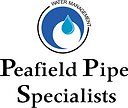Pipeline infrastructure plays a crucial role in transporting various substances, such as oil, gas, and water, over long distances. Ensuring the safety and integrity of pipelines is of paramount importance to prevent accidents, protect the environment, and maintain operational efficiency. One of the key methods employed for evaluating pipeline integrity is hydrostatic testing, a form of pipeline pressure testing. In this article, we will explore the numerous benefits of conducting regular hydrostatic testing to safeguard pipelines and enhance overall performance.
Understanding Hydrostatic Testing
Hydrostatic testing involves pressurizing a pipeline segment with water or another liquid to assess its structural integrity and identify potential weaknesses. This type of pressure test provides valuable insights into the pipeline’s ability to withstand pressure and identifies any leaks or defects. Common types of hydrostatic tests include the water-filled method and the pneumatic test, each tailored to specific pipeline configurations and conditions. Adhering to industry standards and regulations during these tests ensures accurate and reliable results.
Ensuring Pipeline Safety
The consequences of pipeline failures can be catastrophic, leading to significant environmental damage, property loss, and even loss of life. Regular hydrostatic testing acts as a preventive measure by identifying potential weaknesses or flaws in the pipeline before they escalate into critical issues. By subjecting the pipeline to controlled pressures during testing, operators can assess its strength and identify any structural concerns. This proactive approach significantly reduces the risk of pipeline failures and enhances overall safety.
Detecting and Preventing Leaks
Leaks in pipelines can result in severe consequences, including the release of hazardous substances and environmental contamination. Hydrostatic testing plays a pivotal role in detecting leaks and ensuring the integrity of pipelines. By pressurizing the pipeline and monitoring for pressure drops, operators can identify leaks or integrity issues. Early detection allows for timely repairs and preventive measures, minimizing the potential for accidents, reducing environmental impact, and optimizing operational efficiency.
Maintaining Operational Efficiency
Regular hydrostatic testing contributes to maintaining optimal operational efficiency in pipeline systems. By identifying and addressing issues such as leaks, weak spots, or defects, operators can ensure smooth and uninterrupted operations. Testing helps optimize performance, as it allows for adjustments and improvements to be made promptly. Additionally, by preventing unplanned downtime resulting from pipeline failures, hydrostatic testing saves valuable time and resources, enhancing overall efficiency.
Complying with Regulatory Requirements
Pipeline operations are subject to stringent regulatory frameworks and safety standards. Regular hydrostatic testing is a critical component of compliance, as it helps meet these requirements. By conducting tests at specified intervals and documenting the results, operators demonstrate their commitment to pipeline safety and ensure adherence to legal obligations. Non-compliance can lead to severe consequences, including penalties, legal disputes, and damage to a company’s reputation.
Best Practices for Conducting Hydrostatic Testing
To ensure the effectiveness of hydrostatic testing, several best practices should be followed. Careful planning, including determining the appropriate pressure levels, test duration, and monitoring techniques, is crucial. Documentation and record-keeping throughout the testing process enable traceability and facilitate future assessments. Regular maintenance and retesting are essential for long-term pipeline integrity and safety, as they allow for ongoing monitoring and the identification of potential issues.
Conclusion
Regular hydrostatic testing serves as a cornerstone for maintaining the safety, integrity, and efficiency of pipeline systems. By subjecting pipelines to controlled pressures, operators can identify weaknesses, prevent leaks, and ensure compliance with regulatory standards. Through early detection and timely repairs, hydrostatic testing minimizes the risks associated with pipeline failures, protects the environment, and safeguards the interests of both companies and communities. Prioritizing regular hydrostatic testing is a proactive approach that contributes to the longevity and optimal performance of pipelines, ultimately fostering a safer and more sustainable infrastructure for future generations.
